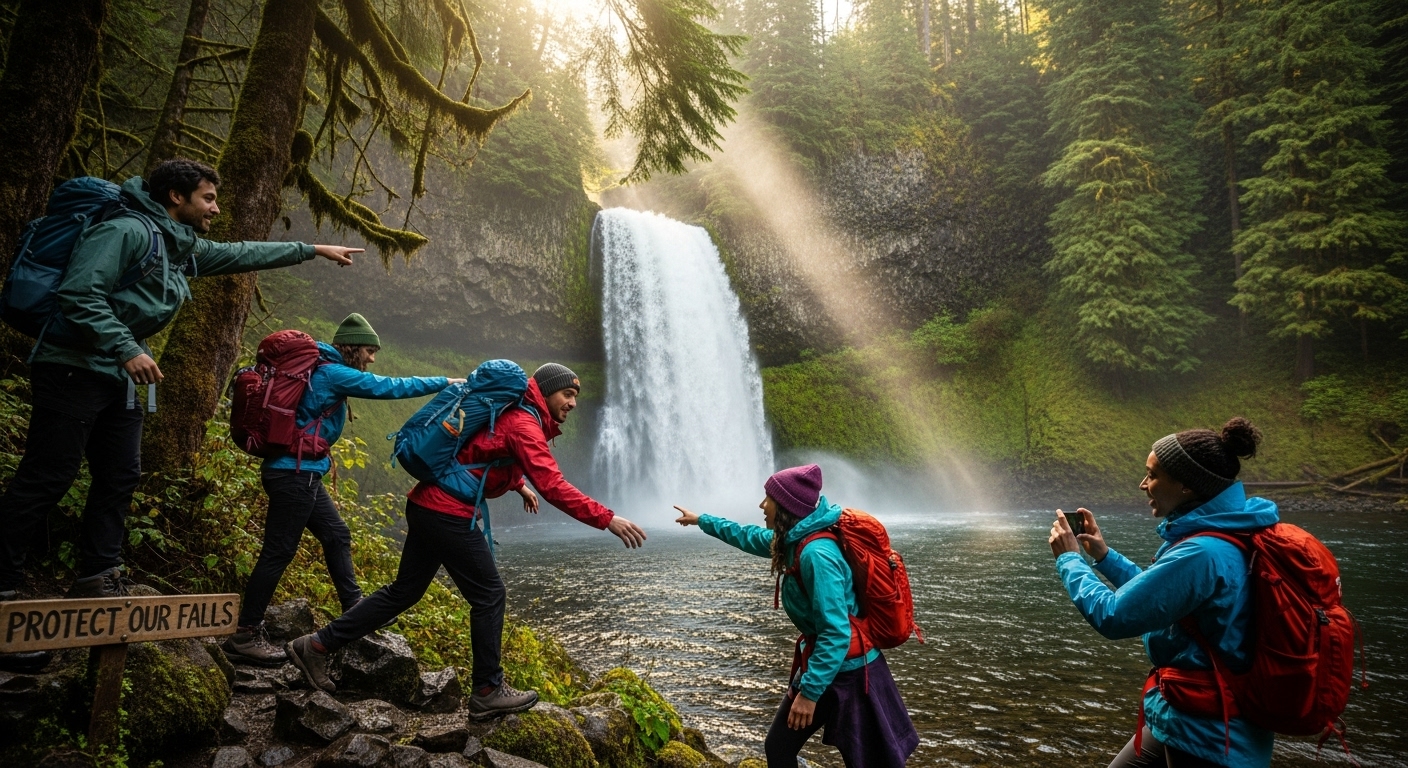In today’s rapidly evolving world, experiences in nature are no longer just leisurely activities—they are avenues for personal growth, community engagement, and environmental awareness. Among the many natural wonders that captivate adventurers and families alike, the waterfall in OR stands out as a destination that combines beauty, adventure, and accessibility.
This article explores the allure of waterfalls in Oregon, what makes them special, and why visiting a waterfall in OR is more than just a sightseeing trip—it’s an opportunity to connect with nature and the local community.
Discovering the Waterfall in OR
Oregon, often called the “Pacific Northwest gem,” is renowned for its lush landscapes, rivers, and cascading waterfalls. A waterfall in OR is not merely a scenic location; it represents centuries of geological transformation, ecological diversity, and cultural significance.
These waterfalls offer visitors a variety of experiences:
-
Visual Splendor: Towering cascades and misty spray create breathtaking natural landscapes.
-
Recreational Opportunities: Hiking, photography, and picnicking are popular activities for visitors of all ages.
-
Ecological Education: Waterfalls support unique flora and fauna, offering educational experiences about local ecosystems.
Whether visiting with family, friends, or as a solo adventurer, a waterfall in OR provides a perfect blend of relaxation and exploration.
Why Waterfalls in Oregon Are Special
The Pacific Northwest’s topography, characterized by volcanic mountains and dense forests, creates ideal conditions for spectacular waterfalls. Oregon’s waterfalls vary in size, shape, and surrounding terrain, ensuring every visit feels unique.
1. Diverse Experiences
From short, easy-access paths suitable for children to challenging hikes for seasoned adventurers, Oregon waterfalls cater to all. Popular options include:
-
Multnomah Falls: One of the tallest and most iconic waterfalls in the state.
-
Silver Falls State Park: Known for its Trail of Ten Falls, where hikers can explore multiple waterfalls on a single loop.
-
Toketee Falls: A hidden gem that combines a two-tiered cascade with vibrant scenery.
2. Community Engagement
Local communities embrace these waterfalls as cultural and recreational hubs. Visitors often interact with guides, participate in cleanup initiatives, or learn about the ecological importance of the area.
3. Health and Well-Being
Spending time near waterfalls encourages physical activity, mindfulness, and relaxation. The sound of cascading water, fresh forest air, and scenic vistas all contribute to mental and emotional well-being.
Planning Your Visit to a Waterfall in OR
When planning a trip to a waterfall in OR, thoughtful preparation ensures safety, enjoyment, and respect for the environment. Key considerations include:
-
Best Times to Visit: Spring and early summer offer peak water flow and vibrant greenery. Fall provides stunning foliage, while winter can be quieter but requires caution due to icy trails.
-
Trail Difficulty: Assess hiking skill levels before choosing a waterfall. Trails range from flat, accessible paths to steep, rugged climbs.
-
Safety Precautions: Wear appropriate footwear, bring water and snacks, and follow marked paths to protect both yourself and the environment.
-
Respect for Nature: Leave no trace, avoid picking plants, and follow local guidelines to preserve the waterfall’s beauty for future visitors.
The Environmental and Community Impact
Waterfalls in Oregon are more than scenic marvels; they are vital ecosystems and cultural assets. Visiting a waterfall in OR responsibly supports:
-
Conservation Efforts: Entrance fees or donations often fund park maintenance and ecological preservation.
-
Local Economies: Tourists support nearby towns, restaurants, and small businesses.
-
Education: Interpretive signs and guided tours increase awareness about local wildlife and environmental protection.
By visiting mindfully, travelers contribute to a cycle where natural beauty, community well-being, and economic growth reinforce one another.
Capturing the Experience
In today’s digital age, sharing the experience of visiting a waterfall in OR has become an integral part of travel. Photography, blogging, and social media allow visitors to document their journeys while inspiring others to explore responsibly.
Tips for Capturing Your Visit:
-
Golden Hours: Early morning or late afternoon provides ideal light for photos.
-
Composition: Include foreground elements like rocks or trees to add depth.
-
Slow Shutter: Capture the smooth, flowing effect of the water for a professional look.
-
Respect Privacy: Be mindful of other visitors when taking pictures.
Sharing these experiences can foster community engagement, eco-conscious travel, and appreciation for Oregon’s natural wonders.
A Model for Sustainable Adventure
Visiting a waterfall in OR demonstrates how outdoor recreation can blend adventure with responsibility. It encourages:
-
Environmental Stewardship: Practicing Leave No Trace principles and participating in cleanup efforts.
-
Community Awareness: Supporting local businesses and educational initiatives.
-
Personal Growth: Challenging oneself physically and mentally while connecting with nature.
Much like modern leaders who integrate purpose with performance, travelers who explore waterfalls responsibly show that enjoyment and responsibility can coexist.
Challenges and Opportunities
Despite their appeal, visiting waterfalls in Oregon comes with challenges:
-
Crowds: Popular waterfalls like Multnomah Falls can become very busy during peak season.
-
Environmental Pressure: Increased tourism can lead to erosion, litter, and habitat disturbance.
-
Weather Variability: Rain or snow can make trails hazardous, requiring flexible planning.
These challenges also create opportunities for innovation. Local authorities and communities have responded with initiatives such as:
-
Trail expansion and improved signage.
-
Guided tours that educate visitors about ecology.
-
Community events that combine recreation with conservation awareness.
Looking Ahead
As awareness of environmental responsibility grows, visiting a waterfall in OR will continue to evolve. Future trends may include:
-
Enhanced Digital Tools: Apps and online maps to plan trips and track crowds.
-
Sustainable Tourism Practices: Eco-friendly parking, waste management, and guided experiences.
-
Educational Programs: Workshops and tours to teach visitors about conservation.
Oregon’s waterfalls offer more than scenic beauty—they are hubs for personal adventure, community connection, and environmental awareness. Planning your visit thoughtfully allows you to experience the full impact of these natural wonders while contributing positively to local communities.
A trip to a waterfall in Oregon is, at its heart, a celebration of nature, adventure, and responsible engagement—much like modern leadership blends achievement with purpose.

